The Golden Jubilee Diamond - The largest cut and faceted diamond in the world, weighing 545.67 carats.
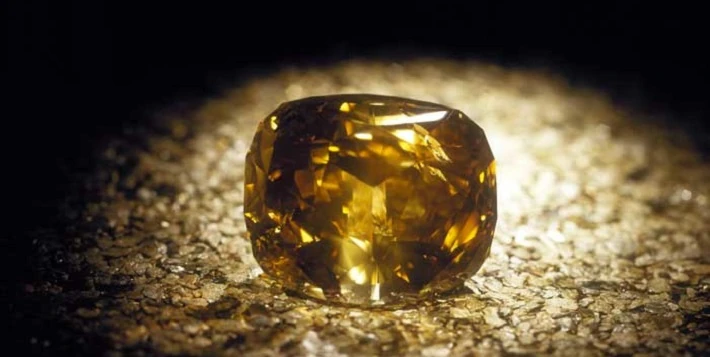
The Golden Jubilee Diamond is the largest cut and faceted diamond in the world, weighing an astounding 545.67 carats. This magnificent gemstone was discovered in the Premier Mine in South Africa in 1985, and was initially known as the “Unnamed Brown”. It was later acquired by a group of Thai businessmen who commissioned Gabriel Tolkowsky, a renowned diamond cutter, to transform the rough stone into a polished gem.
The cutting and polishing process of the Golden Jubilee Diamond took two years, and the result was a breathtaking gemstone that boasted 148 facets, including eight extra facets on the pavilion. The stone’s unique yellow-brown color was also carefully preserved during the cutting process, adding to its allure and rarity.
The Golden Jubilee Diamond’s name pays homage to the 50th anniversary of King Bhumibol Adulyadej’s ascension to the throne of Thailand. The diamond was presented to the king in 1997, and has since been a treasured part of the Thai royal family’s jewelry collection.
The Golden Jubilee Diamond’s immense size and stunning beauty have made it a popular attraction among diamond enthusiasts and tourists alike. In 2000, it was featured in an exhibit at the Millennium Dome in London, where it was viewed by over six million people. The diamond has also been exhibited in other venues around the world, including the Smithsonian Institution in Washington D.C.
The Golden Jubilee Diamond’s unique color, size, and history make it a rare and valuable gemstone, and a true testament to the beauty and grandeur of diamonds. Its story is a testament to the skill and craftsmanship of the diamond cutters who transformed the rough stone into a true masterpiece, and it continues to captivate and inspire people around the world.
The Cullinan I (or Star of Africa) - The largest polished white diamond in the world, weighing 530.20 carats.
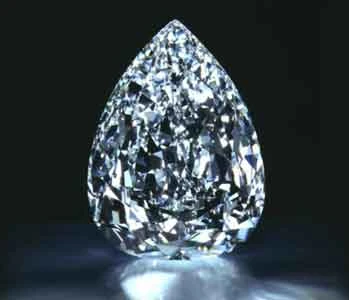
The Cullinan I was discovered in 1905 in the Premier Mine in South Africa, the same mine that produced other legendary diamonds such as the Cullinan II and the Taylor-Burton Diamond. At the time of its discovery, the Cullinan I was an enormous 3,106.75-carat rough diamond, the largest ever found. The diamond was named after Sir Thomas Cullinan, the owner of the mine.
The rough diamond was purchased by the Transvaal Colony government, which then presented it as a gift to King Edward VII of England. The king commissioned the famous diamond cutters, Joseph Asscher and Co., to cut the diamond into smaller gems. It was a delicate process, and Asscher’s team took eight months to plan and execute the cutting. Finally, in 1908, the Cullinan I was born – a stunning, pear-shaped diamond weighing 530.20 carats.
The Cullinan I was soon set into the Royal Sceptre, which is one of the British Crown Jewels. The sceptre, which is made of gold and is decorated with precious gems, is one of the most important symbols of royal authority in the United Kingdom. The diamond is placed at the top of the sceptre, and it is said that the king referred to it as the “Star of Africa” due to its immense size and clarity.
Over the years, the Cullinan I has been worn by several members of the British royal family, including Queen Elizabeth II and Princess Diana. Its sheer size and beauty have made it one of the most famous diamonds in the world, and it is considered a national treasure in the United Kingdom.
The mystique of the Cullinan I lies not only in its size and beauty, but also in its history and symbolism. As a part of the Crown Jewels, the diamond is a symbol of the power and authority of the British monarchy, and it has played a significant role in royal ceremonies and events. Its journey from a rough diamond in a South African mine to a jewel in the British Crown Jewels is a fascinating one, and it continues to captivate and inspire people around the world.
The Incomparable Diamond - The third largest diamond ever discovered, weighing 407.48 carats.
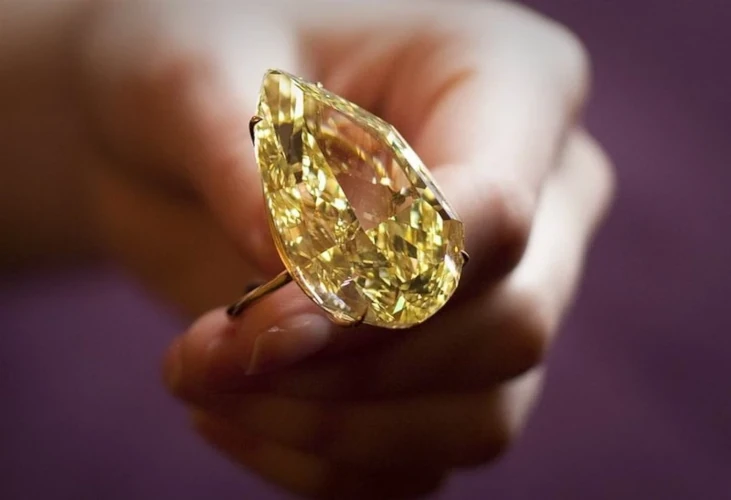
The Incomparable Diamond - The third largest diamond ever discovered, weighing 407.48 carats, is one of the most stunning and valuable gems in the world. This magnificent diamond was discovered in the 1980s by a young girl playing in the piles of rubble at the MIBA Diamond Mine in the Democratic Republic of Congo. The rough diamond, weighing 890 carats, was initially overlooked as it was thought to be a piece of quartz, but it was later recognized as a diamond and purchased by a group of diamond dealers.
The Incomparable Diamond is an exceptional gemstone, with a unique combination of color, clarity, and size. It has a fancy brown-yellow color, which is highly desirable in the diamond trade, and its clarity is rated as internally flawless, meaning that it has no visible inclusions or blemishes. The diamond is also remarkable for its size, as it is one of the largest cut diamonds in the world. The Incomparable Diamond was cut by the world-renowned diamond cutter, Marvin Samuels, over a period of four years.
The Incomparable Diamond has an unusual shape, with 14 facets on its crown and 66 facets on its pavilion, and it weighs 407.48 carats. The diamond is set in a beautiful pendant surrounded by 35 smaller diamonds, which enhances its beauty and brilliance. The pendant is designed to complement the diamond’s unique shape and color, and it is a masterpiece of jewelry artistry.
The Incomparable Diamond is a rare gemstone that is highly coveted by collectors and investors. Its exceptional size, color, and clarity make it a valuable addition to any jewelry collection. In 2013, the diamond was sold at auction for a record-breaking price of $20 million, making it one of the most expensive diamonds ever sold.
The Lesotho Promise - The 15th largest diamond ever discovered, weighing 603 carats.
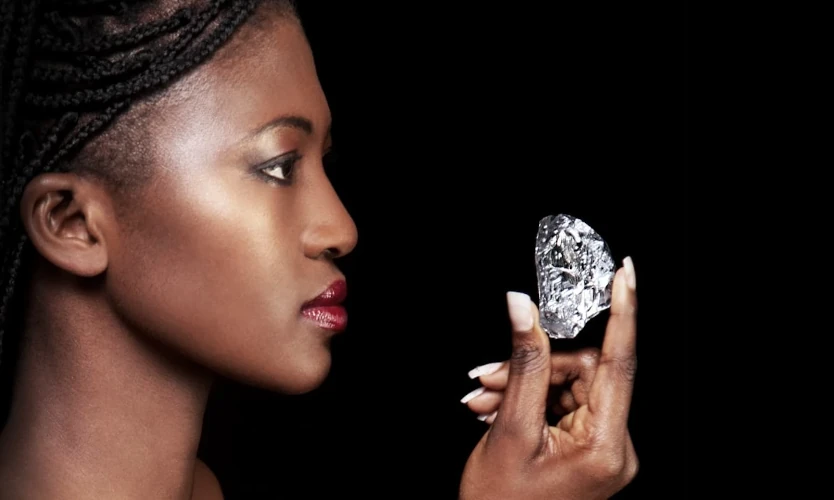
The Lesotho Promise is one of the largest and most valuable diamonds ever discovered. This exceptional gemstone was found in the Letseng mine in the African country of Lesotho in 2006. The rough diamond weighed an impressive 603 carats, making it the 15th largest diamond ever discovered.
The Lesotho Promise is a Type IIa diamond, which means that it is of exceptional quality and purity. This type of diamond is very rare and accounts for only around 1-2% of all diamonds. The Lesotho Promise has a high clarity rating and is completely free of any visible inclusions or flaws. It also has a unique, deep-pink color, which is highly sought-after in the diamond industry.
The Lesotho Promise was sold at auction in Antwerp, Belgium, in 2006 for a record-breaking price of $12.4 million. The buyer of the diamond was the London-based diamond dealer, Graff Diamonds. After purchasing the diamond, Graff Diamonds spent over a year cutting and polishing it to create a collection of smaller diamonds, which were sold at auction for an additional $45 million.
The Lesotho Promise is not only a valuable and stunning gemstone, but it is also a symbol of hope and prosperity for the people of Lesotho. The Letseng mine, where the diamond was discovered, is one of the highest diamond mines in the world, and it is owned by the Lesotho government and a private company. The mine has brought economic growth and employment opportunities to the region, and the discovery of the Lesotho Promise has further boosted the diamond industry in Lesotho.
The Excelsior Diamond - The largest diamond ever discovered until the Cullinan Diamond was found. It weighed 995.20 carats, but was later cut down to 10 smaller diamonds.
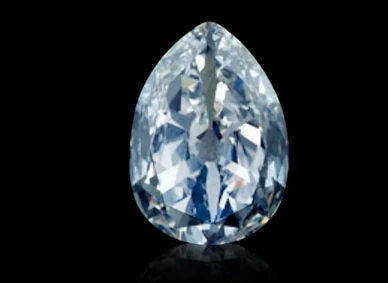
The Excelsior Diamond is one of the most legendary and fascinating diamonds in history. Discovered in 1893 in South Africa, it was the largest diamond ever found at that time, weighing a whopping 995.20 carats. The diamond was named after the Excelsior diamond mine where it was found, which was owned by the diamond mining company De Beers.
The discovery of the Excelsior Diamond caused a sensation in the diamond world, and it was quickly acquired by the London-based diamond dealer, George F. Kunz. Kunz was a renowned gemologist who recognized the exceptional quality and rarity of the diamond. He later sold the diamond to the wealthy American businessman, William Waldorf Astor, who was fascinated by the diamond’s immense size and beauty.
Despite its incredible size, the Excelsior Diamond was eventually cut down into 10 smaller diamonds, which were sold separately. The largest of these diamonds, known as the Excelsior I, weighed 69.68 carats, making it one of the largest diamonds in the world at that time.
The cutting of the Excelsior Diamond was a monumental task, which took nearly three years to complete. The diamond was cut by I.J. Asscher, a renowned diamond cutter, who used the latest technology and techniques to ensure that the diamonds were cut perfectly and without flaws. The cutting of the Excelsior Diamond was a testament to the skill and expertise of diamond cutters, and it set a new standard for diamond cutting and polishing.
The Millennium Star - The second largest polished diamond in the world, weighing 203.04 carats.
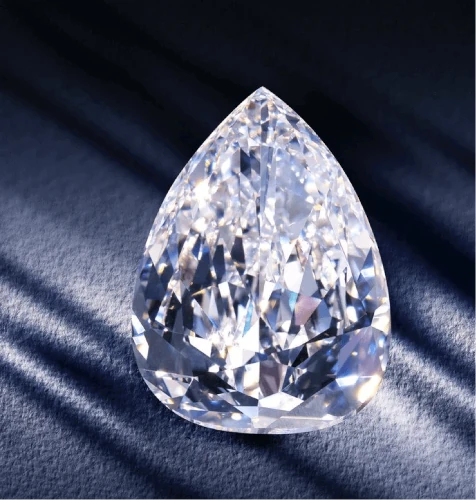
The Millennium Star is one of the most remarkable diamonds in the world. This stunning gemstone is the second largest polished diamond in the world, weighing an impressive 203.04 carats. It is a Type IIa diamond, which means that it is of exceptional quality and purity, with a high clarity rating and no visible inclusions or flaws.
The Millennium Star was discovered in the Mbuji-Mayi district of Zaire (now the Democratic Republic of Congo) in 1990. It was acquired by De Beers, the diamond mining company, and was later cut and polished by the world-renowned diamond cutter, Gabi Tolkowsky. Tolkowsky is known for his innovative diamond cutting techniques and has worked on some of the world’s most famous diamonds, including the Centenary Diamond and the Golden Jubilee Diamond.
The Millennium Star is a pear-shaped diamond with a unique, colorless, and flawless appearance. Its beauty and size have made it one of the most famous diamonds in the world and have earned it a place in history as one of the most valuable and sought-after gemstones.
The Millennium Star is currently owned by De Beers and is on display at the Tower of London as part of the Crown Jewels exhibition. It is a testament to the skill and expertise of diamond cutters and to the power and beauty of diamonds.
The Pink Star - The largest pink diamond in the world, weighing 59.60 carats.
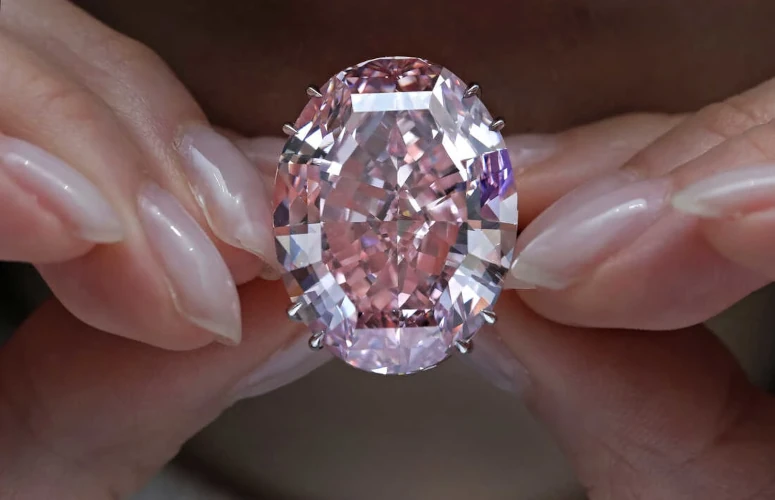
The Pink Star is one of the most magnificent and rarest diamonds in the world. It is the largest known pink diamond, weighing an impressive 59.60 carats. This stunning gemstone is classified as a Type IIa diamond, which means it is of the highest quality and purity with a high clarity rating and no visible inclusions or flaws.
The Pink Star was discovered in 1999 by De Beers at the Williamson mine in Tanzania. It was originally a rough diamond weighing 132.5 carats, which was later cut and polished into its current, breathtaking form. The cutting process took over two years to complete and involved some of the most skilled diamond cutters in the world.
The Pink Star was first unveiled to the public in 2003 and was subsequently sold to an anonymous buyer for a record-breaking price of $83 million at an auction in 2013. This made it the most expensive diamond ever sold at auction, breaking the previous record held by the Graff Pink diamond. The Pink Star’s unique and unparalleled beauty, coupled with its rarity, make it one of the most sought-after diamonds in the world.
The Pink Star is a vivid pink color, with a homogeneous hue, tone, and saturation. Its exceptional color is attributed to the presence of a rare chemical impurity called “graining,” which affects the crystal structure of the diamond and results in its unique pink coloration.
The De Beers - The largest uncut diamond ever discovered, weighing 3,106.75 carats.
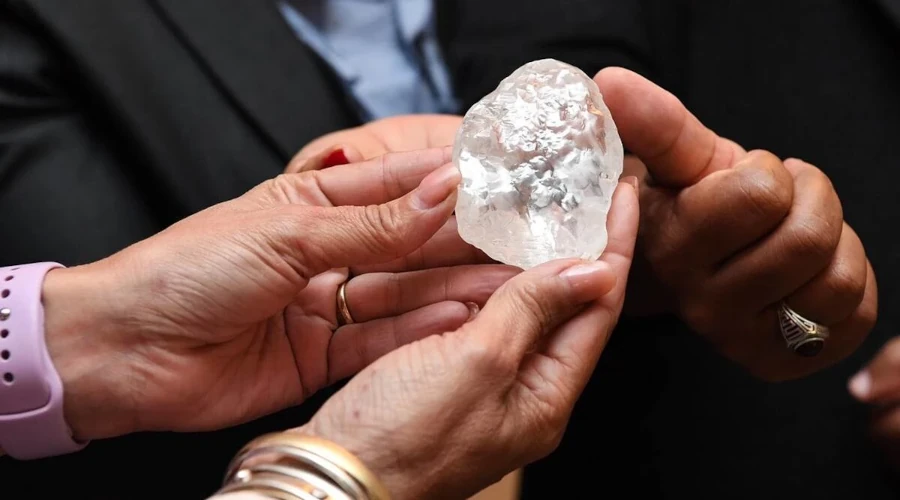
The De Beers diamond is one of the most remarkable diamonds in the world, and it holds a special place in the history of diamond mining. This massive gemstone is the largest uncut diamond ever discovered, weighing an incredible 3,106.75 carats.
The De Beers diamond was discovered in 1888 in the Kimberley mine in South Africa. It was named after the mining company that owned the mine at the time, and it quickly gained worldwide attention due to its massive size and unique beauty. The diamond was originally found in a nearby stream bed, and it was believed to have been carried there by erosion from the primary kimberlite deposit.
The De Beers diamond was eventually sold to the Diamond Trading Company, which was owned by De Beers. The company then cut the diamond into three separate pieces, weighing 94.38 carats, 37.30 carats, and 4.39 carats, respectively. The largest piece, known as the “Star of Africa I,” is now part of the British Crown Jewels and is on display in the Tower of London.
Despite being cut into smaller pieces, the De Beers diamond remains one of the largest and most impressive diamonds ever discovered. Its size and beauty have captured the imagination of people around the world for over a century, and it continues to inspire and awe those who see it.
The discovery and subsequent cutting of the De Beers diamond were significant events in the history of diamond mining and the diamond trade. They highlighted the incredible natural resources that exist in South Africa and demonstrated the power and value of diamonds as symbols of wealth, beauty, and excellence.
The Red Cross - The largest red spinel in the world, weighing 400 carats.
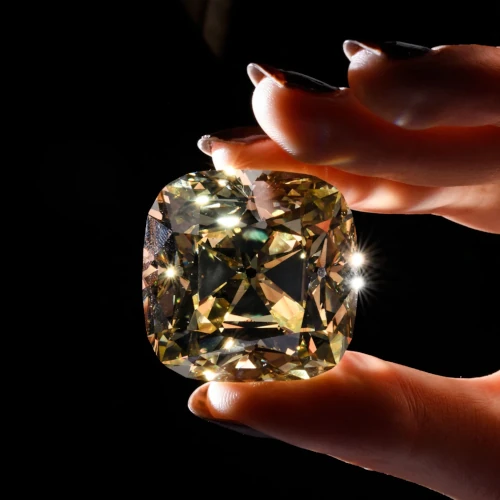
The Red Cross is a remarkable gemstone that is considered the largest red spinel in the world, weighing an impressive 400 carats. It is named after the distinctive cross-shaped inclusion that is visible in the stone and is regarded as a rare and valuable gemstone due to its exceptional size and quality.
The Red Cross was discovered in Tajikistan, a country in Central Asia known for its rich deposits of spinel gemstones. It is believed to have been mined in the early 1900s and has since become a treasured possession of gemstone collectors and enthusiasts around the world.
Red spinel is a type of gemstone that is often mistaken for ruby due to its deep red color. However, spinel is a distinct mineral that has its own unique properties and qualities. The Red Cross spinel is particularly prized due to its rich, vivid color, which is thought to be the result of traces of chromium and iron within the stone.
The Blue Giant of the Orient - The largest faceted blue sapphire in the world, weighing 486.52 carats.
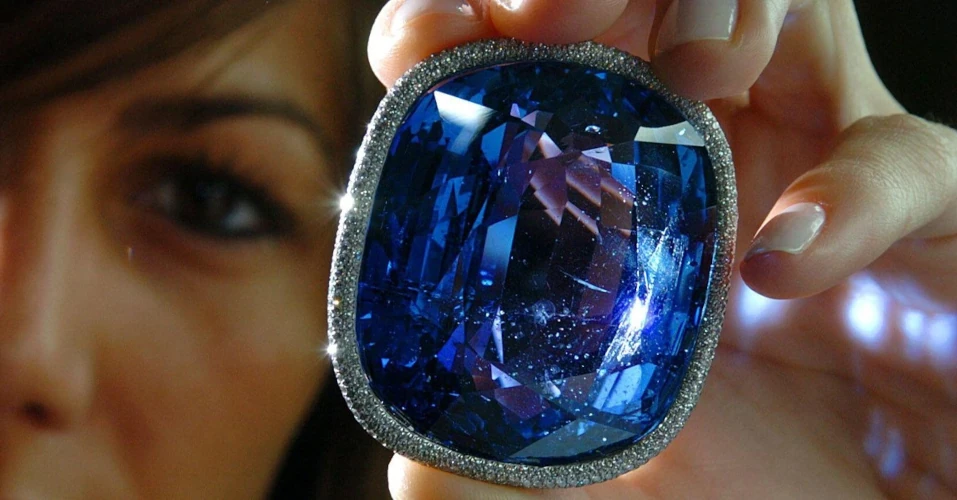
The Blue Giant of the Orient is one of the most impressive and valuable gemstones in the world, and it holds a special place in the history of blue sapphires. This remarkable gemstone is the largest faceted blue sapphire in the world, weighing an incredible 486.52 carats.
The Blue Giant of the Orient was discovered in Sri Lanka, a country known for its rich deposits of high-quality sapphires. It is believed to have been mined in the early 1900s and was eventually purchased by an American gemstone dealer named John Saul. Saul recognized the unique beauty and value of the gemstone and had it cut and polished to highlight its exceptional qualities.
The Blue Giant of the Orient is known for its remarkable color and clarity. Its deep blue hue is reminiscent of the ocean on a clear day, and its exceptional clarity and transparency allow light to pass through the stone in a dazzling display of brilliance and fire.
The Blue Giant of the Orient has a fascinating history and has been owned by some of the most notable figures in the world of gemstones and jewelry. It was eventually purchased by the American jeweler Harry Winston, who named it the “Star of Asia” and incorporated it into a necklace with diamonds and other precious gemstones.